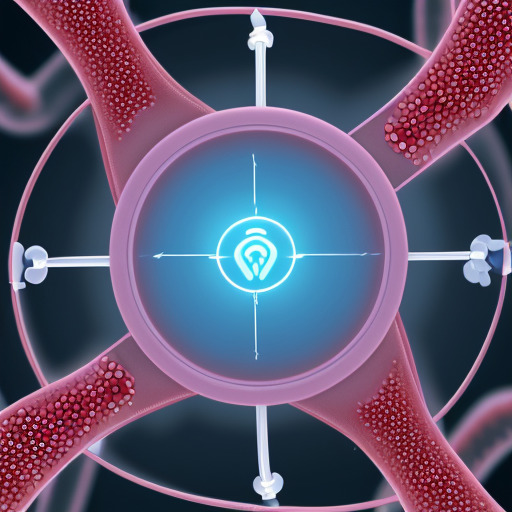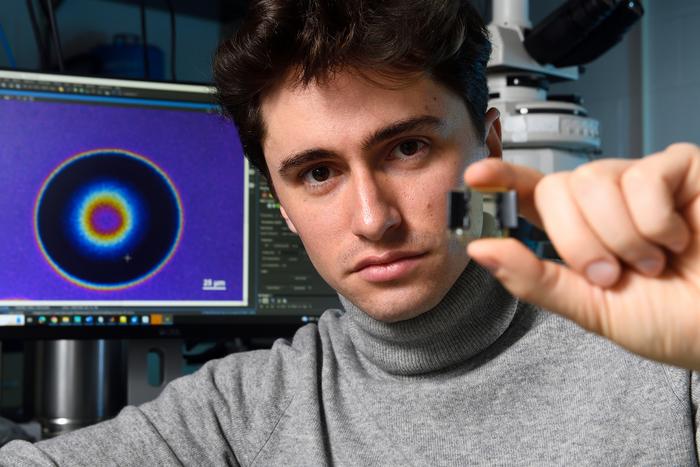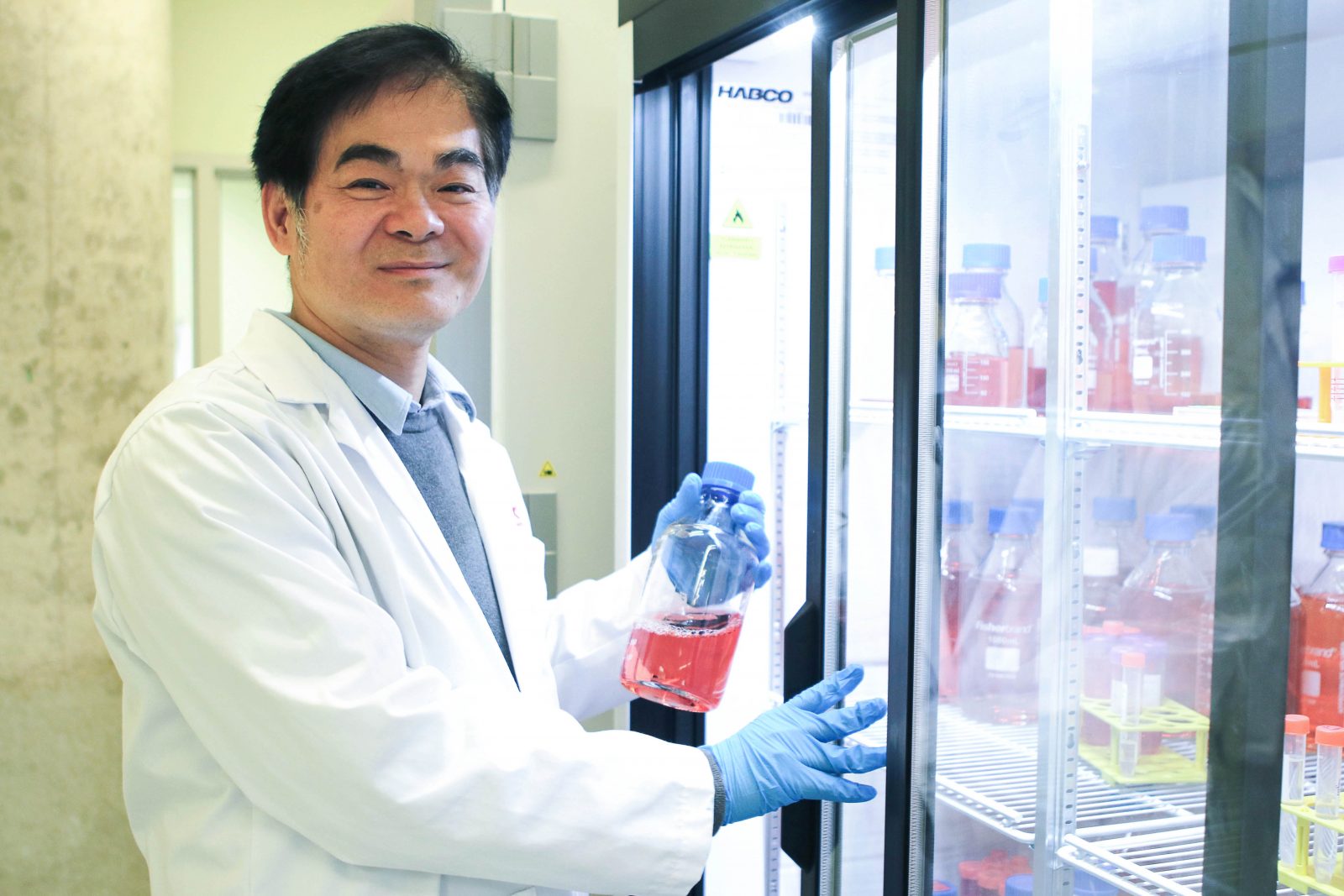
via Prodia
Biological computing machines, such as micro and nano-implants that can collect important information inside the human body, are transforming medicine. Yet, networking them for communication has proven challenging. Now, a global team, including EPFL researchers, has developed a protocol that enables a molecular network with multiple transmitters.
First, there was the Internet of Things (IoT) and now, at the interface of computer science and biology, the Internet of Bio-Nano Things (IoBNT) promises to revolutionize medicine and healthcare. The IoBNT refers to biosensors that collect and process data, nano-scale Labs-on-a-Chip that run medical tests inside the body, the use of bacteria to design biological nano-machines that can detect pathogens, and nano-robots that swim through the bloodstream to perform targeted drug delivery and treatment.
“Overall, this is a very, very exciting research field,” explained Assistant Professor Haitham Al Hassanieh, head of the Laboratory of Sensing and Networking Systems in EPFL’s School of Computer and Communication Sciences (IC). “With advances in bio-engineering, synthetic biology, and nanotechnology, the idea is that nano-biosensors will revolutionize medicine because they can reach places and do things that current devices or larger implants can’t,” he continued.
Yet no matter how exciting this cutting-edge research field is, there remains a huge, fundamental challenge – when you have a nano-robot in someone’s body, how will you communicate with it? Traditional techniques, like wireless radios, work well for large implants such as pacemakers or defibrillators but can’t be scaled to micro and nano-dimensions, and wireless signals don’t penetrate through body fluids.
Enter what’s being called biomolecular communication, inspired by the body itself. It doesn’t utilize electromagnetic waves but biological molecules both as carriers and as information, mimicking the existing communication mechanisms in biology. In its simplest form it encodes “1” and “0” bits by releasing or not releasing molecular particles into the bloodstream – similar to ON-OFF-Keying in wireless networks.
“Biomolecular communication has emerged as the most suitable paradigm for networking nano-implants. It’s an incredible idea that we can send data by encoding it into molecules which then go through the bloodstream and we can communicate with them, guiding them on where to go and when to release their treatments, just like hormones,” Al Hassanieh said.
Recently, Al Hassanieh and his team, in collaboration with researchers in the United States presented their paper Towards Practical and Scalable Molecular Networks at ACM SIGCOMM 2023, a flagship annual conference onData Communication, in which they outlined theirMoMA(Molecular Multiple Access) protocol that enables a molecularnetwork with multiple transmitters.
“Most existing research is very theoretical and doesn’t work because the theories haven’t considered biology,” explained Al Hassanieh. “For example, every time the heart pumps there’s a jitter and the body changes its internal communication channel. Most existing theory assumes that the channel that you send the molecules over is very stable and doesn’t change. It actually changes very fast.”
In MoMA, the team introduced packet detection, channel estimation, and encoding/decoding schemes that leverage the unique properties of molecular networks to address existing challenges. They evaluated the protocol on a synthetic experimental testbed – emulated blood vessels with tubes and pumps – demonstrating that it can scale up to four transmitters while significantly outperforming state-of-the-art technology.
Biological computing machines, such as micro and nano-implants that can collect important information inside the human body, are transforming medicine. Yet, networking them for communication has proven challenging. Now, a global team, including EPFL researchers, has developed a protocol that enables a molecular network with multiple transmitters.
First, there was the Internet of Things (IoT) and now, at the interface of computer science and biology, the Internet of Bio-Nano Things (IoBNT) promises to revolutionize medicine and healthcare. The IoBNT refers to biosensors that collect and process data, nano-scale Labs-on-a-Chip that run medical tests inside the body, the use of bacteria to design biological nano-machines that can detect pathogens, and nano-robots that swim through the bloodstream to perform targeted drug delivery and treatment.
“Overall, this is a very, very exciting research field,” explained Assistant Professor Haitham Al Hassanieh, head of the Laboratory of Sensing and Networking Systems in EPFL’s School of Computer and Communication Sciences (IC). “With advances in bio-engineering, synthetic biology, and nanotechnology, the idea is that nano-biosensors will revolutionize medicine because they can reach places and do things that current devices or larger implants can’t,” he continued.
Yet no matter how exciting this cutting-edge research field is, there remains a huge, fundamental challenge – when you have a nano-robot in someone’s body, how will you communicate with it? Traditional techniques, like wireless radios, work well for large implants such as pacemakers or defibrillators but can’t be scaled to micro and nano-dimensions, and wireless signals don’t penetrate through body fluids.
Enter what’s being called biomolecular communication, inspired by the body itself. It doesn’t utilize electromagnetic waves but biological molecules both as carriers and as information, mimicking the existing communication mechanisms in biology. In its simplest form it encodes “1” and “0” bits by releasing or not releasing molecular particles into the bloodstream – similar to ON-OFF-Keying in wireless networks.
“Biomolecular communication has emerged as the most suitable paradigm for networking nano-implants. It’s an incredible idea that we can send data by encoding it into molecules which then go through the bloodstream and we can communicate with them, guiding them on where to go and when to release their treatments, just like hormones,” Al Hassanieh said.
Recently, Al Hassanieh and his team, in collaboration with researchers in the United States presented their paper Towards Practical and Scalable Molecular Networks at ACM SIGCOMM 2023, a flagship annual conference on Data Communication, in which they outlined their MoMA(Molecular Multiple Access) protocol that enables a molecular network with multiple transmitters.
“Most existing research is very theoretical and doesn’t work because the theories haven’t considered biology,” explained Al Hassanieh. “For example, every time the heart pumps there’s a jitter and the body changes its internal communication channel. Most existing theory assumes that the channel that you send the molecules over is very stable and doesn’t change. It actually changes very fast.”
In MoMA, the team introduced packet detection, channel estimation, and encoding/decoding schemes that leverage the unique properties of molecular networks to address existing challenges. They evaluated the protocol on a synthetic experimental testbed – emulated blood vessels with tubes and pumps – demonstrating that it can scale up to four transmitters while significantly outperforming state-of-the-art technology.
The researchers acknowledge that their current synthetic testbed may not capture all the challenges associated with designing protocols for molecular networks and that in-vivo testing of micro-implants and micro-fluids in wet-labs is needed to achieve practical and deployable molecular networks. However, they believe they have taken the first steps towards this vision and that their insights for designing molecular networks will hold, as the underlying diffusion and fluid dynamics models in their testbed are fundamental to molecular communication
“I am very excited about this area because it’s a new form of communication. We are a systems group, we like building things and getting them working. It’s taken time to develop the expertise we have in biomolecular communication but now we are at the stage where we are finding collaborators and can get things moving. People think this is science fiction but it’s fast moving to science fact,” Al Hassanieh concluded.
Original Article: Wireless in the blood
More from: École Polytechnique Fédérale de Lausanne
The Latest Updates from Bing News
Go deeper with Bing News on:
Internet of Bio-Nano Things
- Digi, Nano, Bio, Neuro – or why we should care more about converging technologies
Dirk Helbing expects that in the future digital technologies may penetrate the human body ever more. However, he believes that society is not prepared for the risks. To protect our most intimate data ...
- The Role of Edge Computing in IoT Performance
Edge computing has emerged as a crucial solution to address the limitations of cloud computing in supporting context-aware and delay-sensitive services in the Internet of Things (IoT) era. This ...
- internet of things
In today’s “predictable things that happened before and definitely will happen again”, we have another company in the “smart device” business that has just shuttered their servers ...
- Internet of things
The goal of the new US Cyber Trust Mark, coming voluntarily to Internet of Things (IoT) devices by the end of 2024, is to keep people from having to do deep research before buying a thermostat ...
- Internet of Things
Top devices raising concerns among consumers are the Amazon Echo, security cameras, Google Nest thermostats, smart doorbells, and smart TVs, revealed the research by CraftJack, a construction ...
Go deeper with Bing News on:
Biomolecular communication
- Fruit fly model identifies key regulators behind organ development
Jeremiah Zartman, associate professor of chemical and biomolecular engineering at the University ... have been published in Nature Communications. "We're trying to simulate an organ in the ...
- Biomolecular Atlas for Bone Marrow to Offer Unprecedented Window into Blood Production
Researchers at Children's Hospital of Philadelphia (CHOP) and the Perelman School of Medicine at the University of Pennsylvania revealed a powerful new bone marrow atlas that will offer the public a ...
- Female mosquitoes rely on each other to hunt for the best breeding sites
How do Aedes female mosquitos find the perfect site to lay their eggs? FIU researchers find they rely on one another for good reviews of breeding sites.
- U of T researchers discover compounds produced by gut bacteria that can treat inflammation
Researchers at the University of Toronto have found naturally occurring compounds in the gut that can be harnessed to reduce inflammation and other symptoms of digestive issues. This can be achieved ...
- Can biomolecular designers move fast without breaking things?
The process relies on similarity between sequences to recognize threats—a paradigm that biomolecular design tools threaten to break because they enable the design of molecules with no ...










